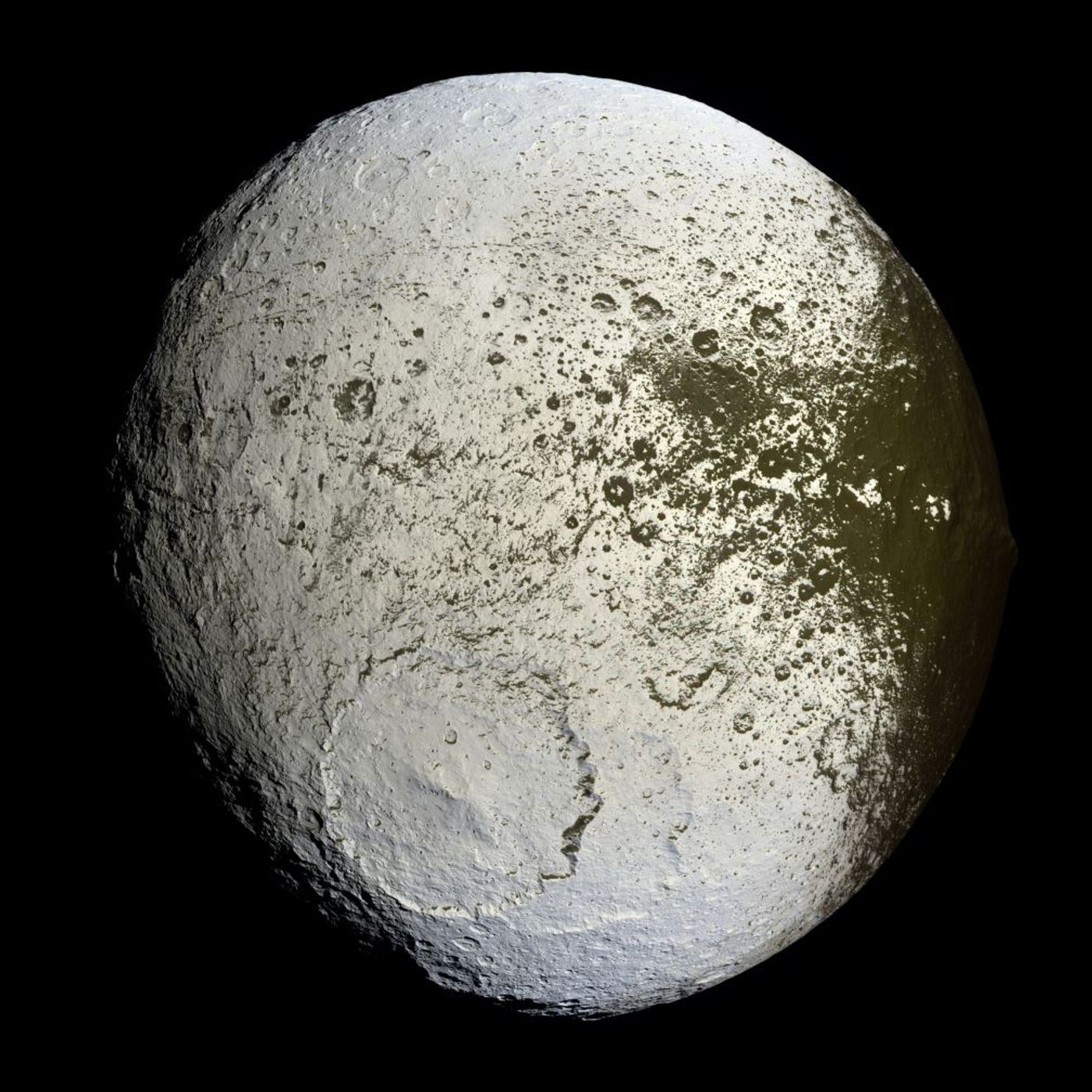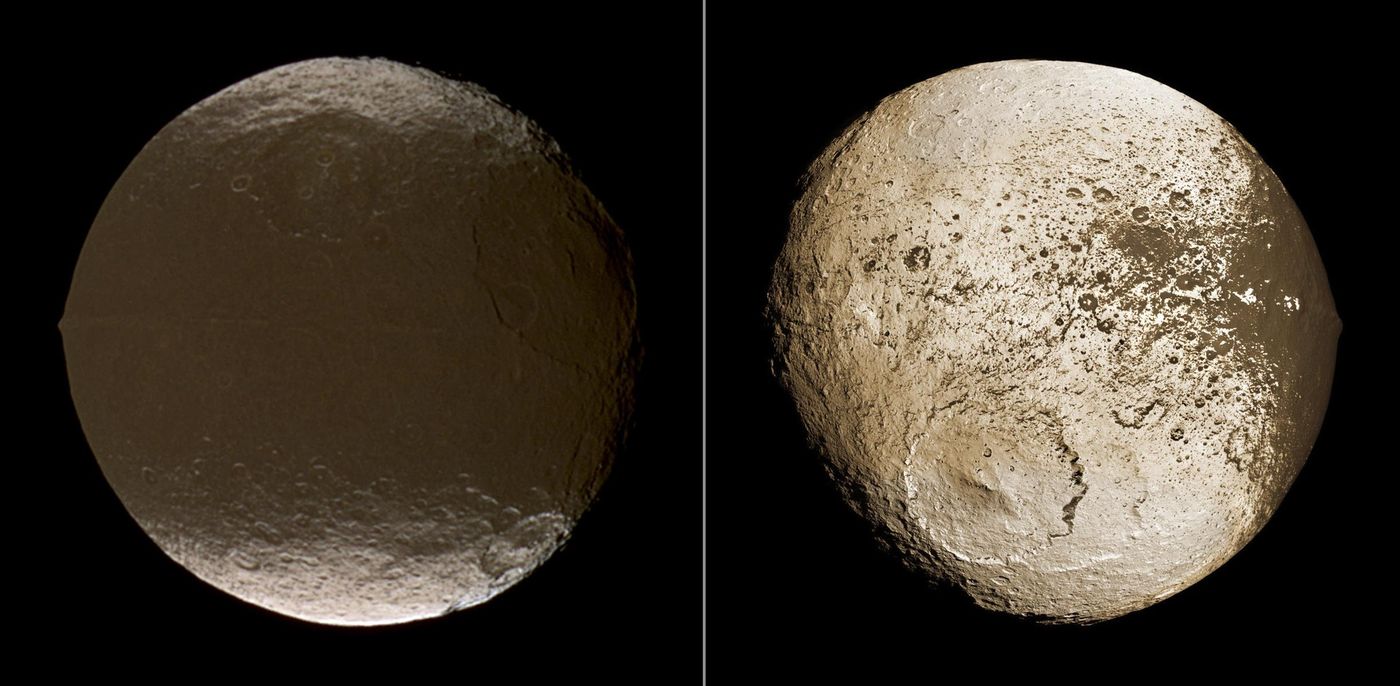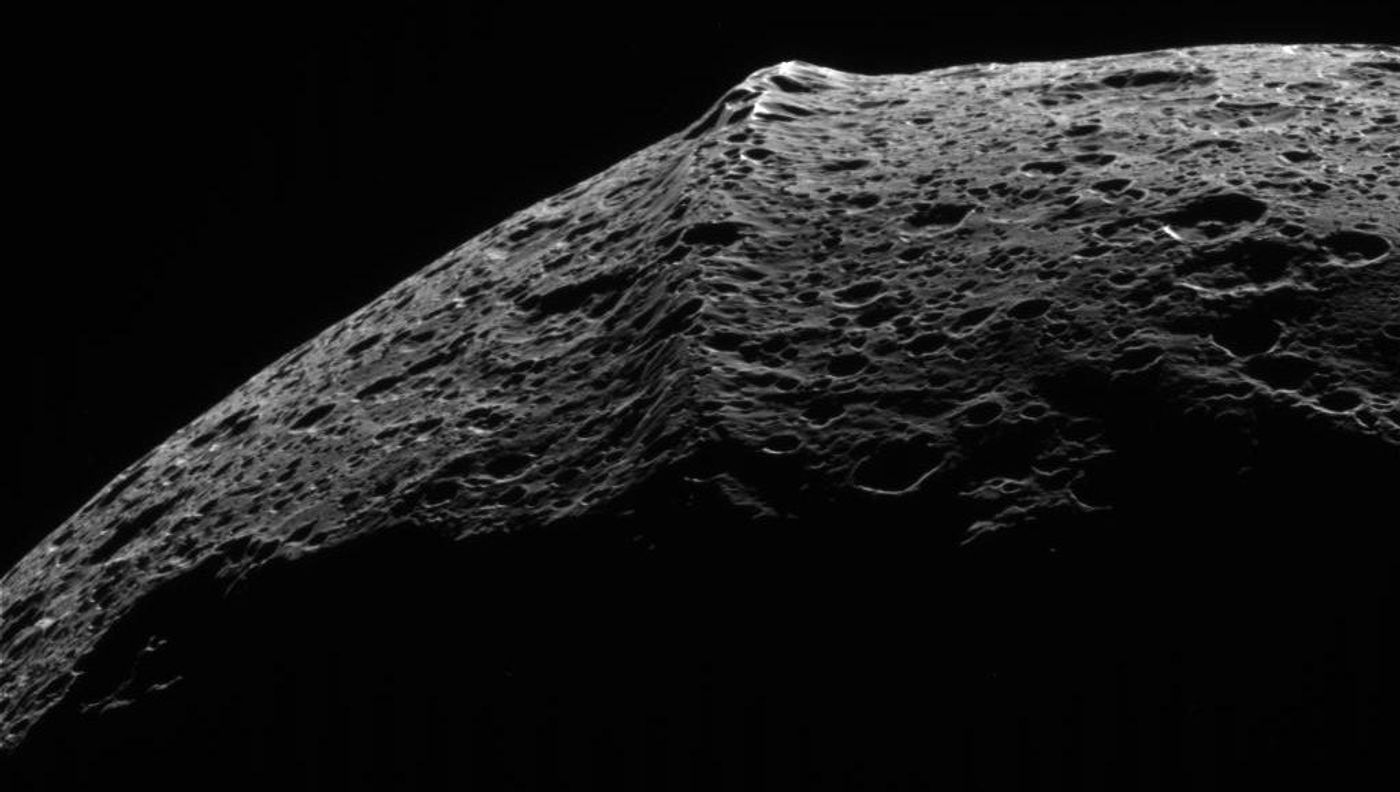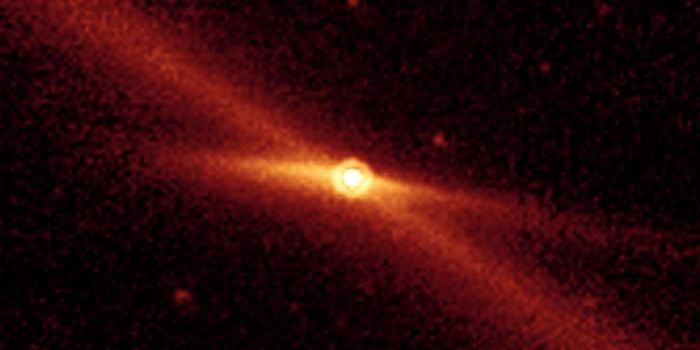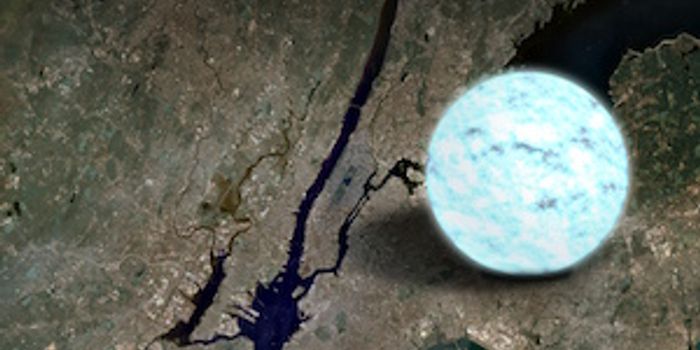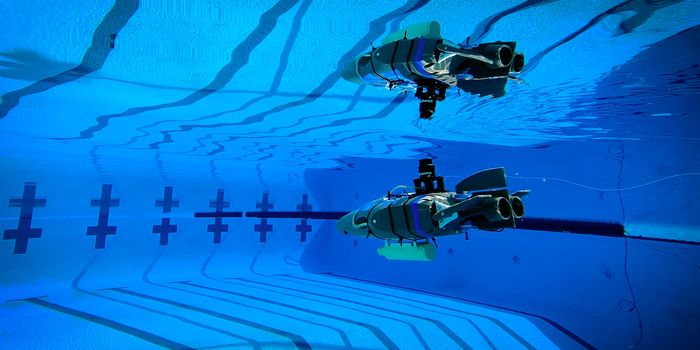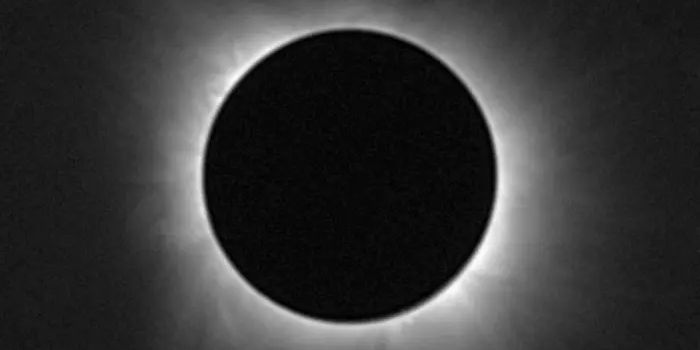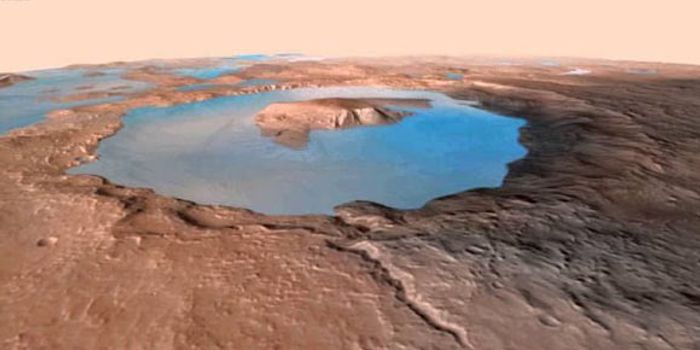Saturn's Walnut-Shaped Iapetus | Solar System Moons
Saturn's moon, Iapetus, imaged by NASA's Cassini spacecraft in September 2007. (Credit: NASA/JPL-Caltech/Space Science Institute)
We recently explored Saturn’s moon, Pan, and its unique, food-like features that emanate from gathering dust via Saturn’s very rings. Now we will explore another one of Saturn’s moons which also exhibits food-like qualities, as well as what geologic or astrophysical processes might be responsible for them.
Saturn’s third-largest and walnut-shaped moon, Iapetus, was discovered by Giovanni Cassini on October 25, 1671, but was observed as a dot whose brightness varied as it orbited the ringed planet. Its discovery went unconfirmed for another 300 years, until Voyager 1 and Voyager 2 flew past the 457-mile (736-kilometer) wide moon. Just like Earth’s Moon, Iapetus is also tidally locked to Saturn, meaning it always has the same face towards Saturn.
Iapetus exhibits two prominent and distinct geologic features on its surface, one of which is its two-toned appearance, as one side of the small moon is very bright while the other side very dark. This was noted by Giovanni Cassini as he could only observe Iapetus when it orbited on the west side of Saturn. This puzzled scientists, as several, long-standing hypotheses were thought to explain these dark and light features. These hypotheses included Iapetus sweeping up particles from another of Saturn’s moon, Phoebe, as the near-constant replenishment of dark material could explain the limited number of fresh craters on Iapetus’ surface. A second hypothesis involved possible ice volcanism, also known as cryovolcanism, on Iapetus. It wasn’t until NASA’s Cassini spacecraft, appropriately named after the famous astronomer, conducted a flyby of the small moon in September 2007 that a third hypothesis developed from its observations of what’s known as thermal segregation. This involves the darker material being able to absorb more heat due to Iapetus’ slow rotation of 79 days, and could explain its origin.
Iapetus with its two-toned appearance. (Credit: NASA/JPL-Caltech/Space Science Institute)
The other geologic feature unique to Iapetus is its equatorial ridge, which populates approximately 75% of the moon’s equator, and several hypotheses have been made to determine the ridge’s origins. These include the formation of the ridge when Iapetus might have rotated faster than it does today, leftover material, from a collapsed ring, and even a giant impact hypothesis.
NASA Cassini spacecraft's raw image of Iapetus' equatorial ridge. (Credit: NASA/JPL-Caltech/Space Science Institute)
What else will scientists learn about this fantastic, and unique moon in the coming years and decades? Only time will tell, and this is why we science!
Sources: Labroots, NASA, BIG THINK, Washington University in St. Louis
As always, keep doing science & keep looking up!
